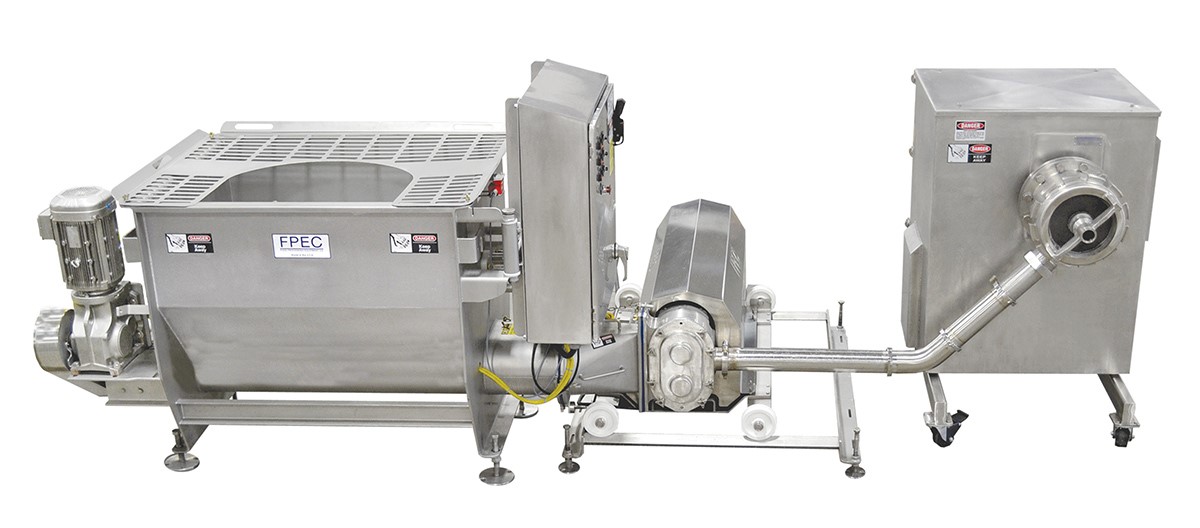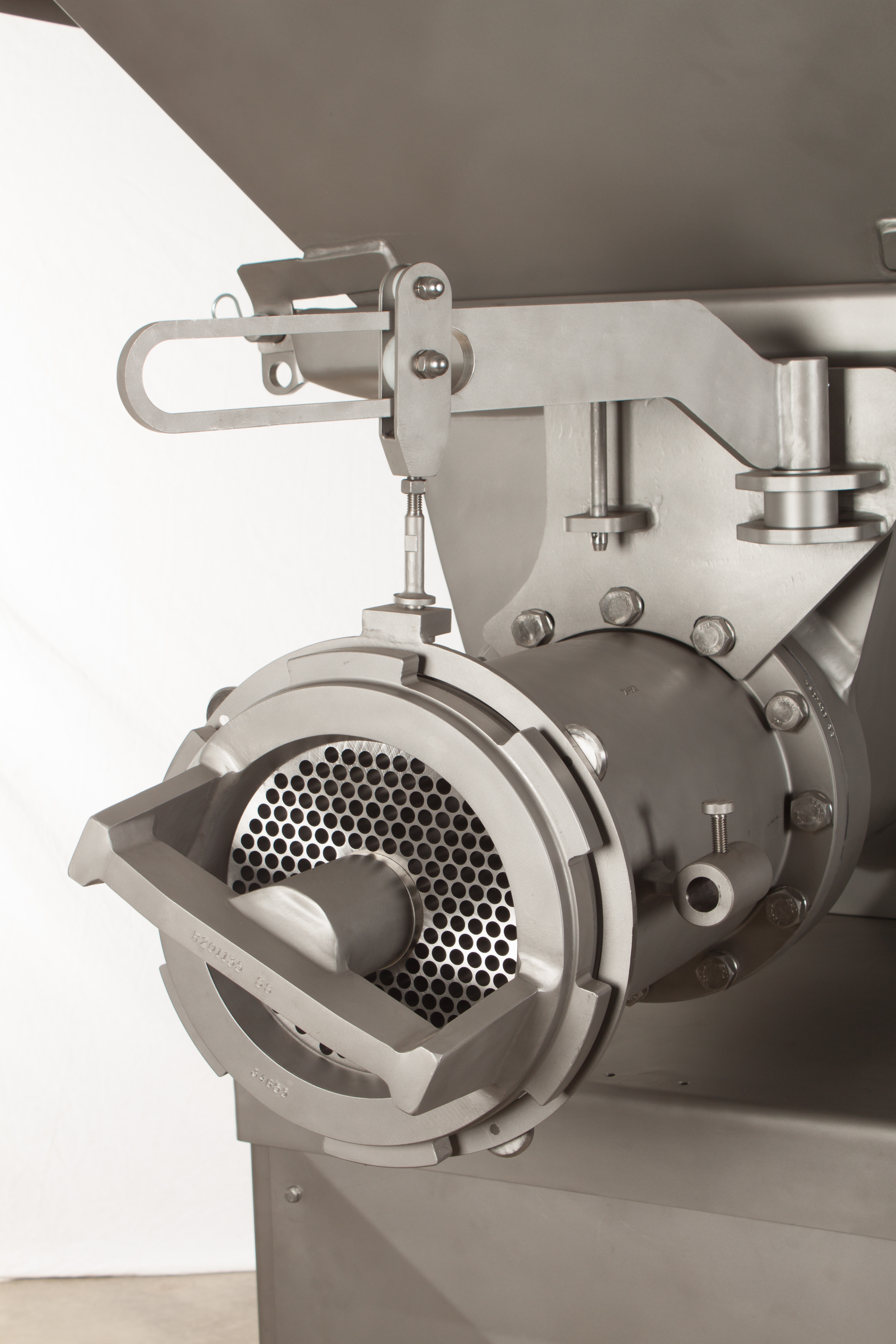Maintaining overall equipment effectiveness requires pet food and treat processors to use all the tools at their disposal from basic common sense to sophisticated algorithms that identify abnormal high-frequency vibrations. Effectively planning and anticipating required maintenance can increase production output, decrease downtime, lower maintenance costs, improve allocation of inventory, reduce labor costs and minimize quality issues.
A corporate culture committed to preempting equipment failure supports exchanging minutes spent now on preventive maintenance to save hours in unplanned downtime later. “The pet food industry, in our view, is growing at a very fast pace,” says Kate Rome, president, Rome Grinding Solutions, Sheldon, Iowa. “The customers that we currently service, in order to keep up with the high demand of their products, cannot afford to have their equipment out of service for any length of time. So preventive and planned maintenance is a very high priority.”
Equipment manufacturers provide training, recommended maintenance schedules and built-in features to initiate and track maintenance activities. While preventive and diagnostic features vary with each type of processing equipment, one of the most common and useful features is also the most basic. “The equipment has messages that show up on the operator panel saying what routine maintenance needs to be performed,” says Patrick Ditchfield, executive vice president, Reiser, Canton, Massachusetts. “Doing this basic routine maintenance work is probably the most important thing a processor can do to keep in production.”

A little attention on a regular basis goes a long way toward getting the optimal performance out of equipment. “Many of the components and wearable parts that we include on our equipment have wear markers built in to their design,” Rome says. “This gives the customer a noticeable reference to when parts should be replaced before the equipment fails completely. These wearable parts, if changed at the appropriate time, will prevent any substantial downtime and will save the customer the cost of repairing or replacing the larger and more expensive components.”
Understand the signs
Equipment can indicate when maintenance or repairs are needed if you know what the indicators mean. “By measuring the weight of every piece produced with a volumetric food pump or attachment, and calculating the trend in the standard deviation, it is possible to see that items in the pumping system are wearing out and need to be replaced,” Ditchfield says. “If the pumping elements of the volumetric pump are wearing out, but are not necessarily consistently worn, then the volume of the pumping chamber will vary causing a variation in weight from piece to piece. Catching this issue early not only prevents downtime but also the expense of rising giveaway.”
“The capabilities that smart and connected devices can bring to processors should reduce unscheduled downtime to a minimum,” says Nick Manley, marketing manager for Bühler Aeroglide.
Blade wear on a grinder could indicate bearing wear, improper assembly or that the wrong plate is being used for the type of product. “In grinder applications, most plants don’t wait for signs of wear, they change the plates and blades at the start of every shift and check them midway through the shift,” Garber says. “Many processors change the plates and blades on the grinders more often than we would even recommend because the consequences are too great — they’re catastrophic if you have to recall product. The cost of new blades is usually nowhere near the cost of one hour of downtime on that line. It’s worth the expense to avoid the risk.”
Data and diagnostics 24/7
Some equipment operating systems help processors track maintenance requirements by providing equipment information beyond production data such as hours of operation that can help predict and alert operators to possible maintenance issues. Nick Manley, marketing manager, Bühler Aeroglide, Cary, North Carolina, offers an example. “On a dryer, for instance, alerts to upcoming requirements for maintenance on the conveyor, drive systems, chain, fans and burners, reduce unscheduled downtime by reminding operators and maintenance personnel that critical components might need attention before they actually do.”
Information can be gathered and stored in a database and provided in custom reports or sent as alerts. Through secure internet connections, the industrial internet of things (IIoT) is poised to have far-reaching effects on pet food processors according to Manley. “The capabilities that smart and connected devices can bring to processors should reduce unscheduled downtime to a minimum.” Bühler is already headed down this path with its new digital services products.
Predicting the unpredictable

Bearing wear is one of the most common malfunctions that Augury identifies. “Our technology picks up very early-stage bearing wear – which shows up in higher frequency vibrations – before it is detectable via human inspection, so it’s particularly useful for production equipment,” Yoskovitz says.
Augury serves facilities of all sizes but typically larger, enterprise-level companies are more often looking to standardize practices across multiple facilities and regions. Yoskovitz adds that predictive maintenance requires organizational buy-in.
Garber agrees and says that the approach to maintenance varies from company to company. “We have plants that are very meticulous about maintenance and we have plants that have never performed the recommended maintenance since they purchased the equipment. Those plants tend to purchase a lot more parts.” When downtime can be planned effectively and does not catch operations and maintenance teams by surprise, production costs, quality and reliability are maximized.
Find more articles related to pet food processing equipment on our Equipment page.



